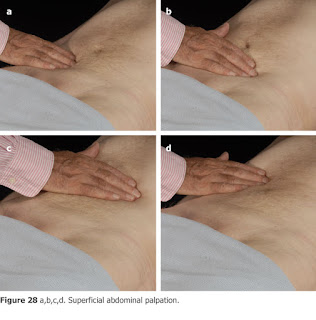PHYSICAL EXAMINATION
physical examination
what is physical examination:
In a physical examination, medical examination, or clinical examination, a medical practitioner examines a patient for any possible medical sign or symptoms of a medical condition. It generally consists of a series of questions about the patient's medical history followed by an examination based on the reported symptoms. Together, the medical history and the physical examination help to determine a diagnosis and devise the treatment plan. These data then become part of the medical record.this article cover the basis of physical examination.
Purpose:
1. To understand the physical and mental well-being of the clients.
2. To detect diseases in its early stage.
3. To determine the cause and the extent of disease.
4. To understand any changes in the condition of diseases. any improvement or regression. 5. To determine the nature of the treatment or nursing care
needed for the client.
6. To safeguard the client and his family by noting the early signs especially in case of a communicable disease. 7. To contribute to the medical research.
8. To find out whether the person is medically fit or not for a
particular task.
Techniques of Physical Examination
The four basic techniques used in physical examination are explained as follows.
Inspection
 |
| Image is taken by google images by mr.siddique shaikh |
It is the systematic visual examination of the client, or it is the process of performing deliberate purposeful observations a systematic manner. It involves observation of the colour in shape, size, symmetry, position and movements. It also use the sense of smell to detect odor, and sense of hearing to detect sounds.
Inspection begins with the initial contact with the client and continues through the entire assessment. The optimal conditions for effective inspection are full exposure of the area and adequate lighting.
General inspection of a client focuses on the following areas . Overall appearance of health or illness.
Signs of distress.
• Facial expression and mood.
• Body size.
• Grooming and personal hygiene.
Besides being used in general survey, inspection is the first method used in examination of a specific area. The chest and abdomen are inspected before palpation and auscultation.
Palpation
It is use of the hands and fingers to gather information through touch. It is the assessment technique which uses sense of touch. It is feeling the body or a part with hands to note the size and position of the organs.
The hands and fingers are sensitive tools and can assess temperature, turgor, texture, moisture, vibrations, size. position, consistency, masses and fluid. The dorsum (back) surfaces of the hand and fingers are used to measure temperature. The palmar (front) surfaces of the fingers and finger pads are used to assess texture, shape, fluid, size. consistency and pulsation. Vibration is palpated best with the palm of the hand.
percusion:
it is the examination by tapping the finger on the body to determine the condition of internal organ.
Auscultation
Auscultation is listening to the internal sounds of the body, usually using a stethoscope. Auscultation is performed for the purposes of examining the circulatory and respiratory systems, as well as the alimentary canal.
characterstics sound are assess by auscultation.
- Frequency
- Intensity
- Duration
- Number
- Quality



Comments
Post a Comment